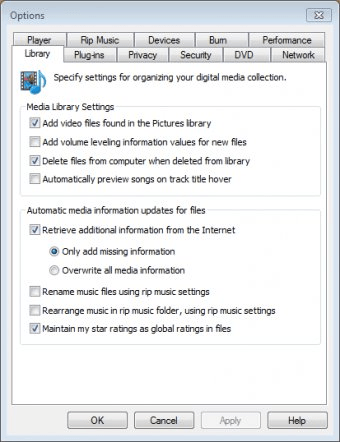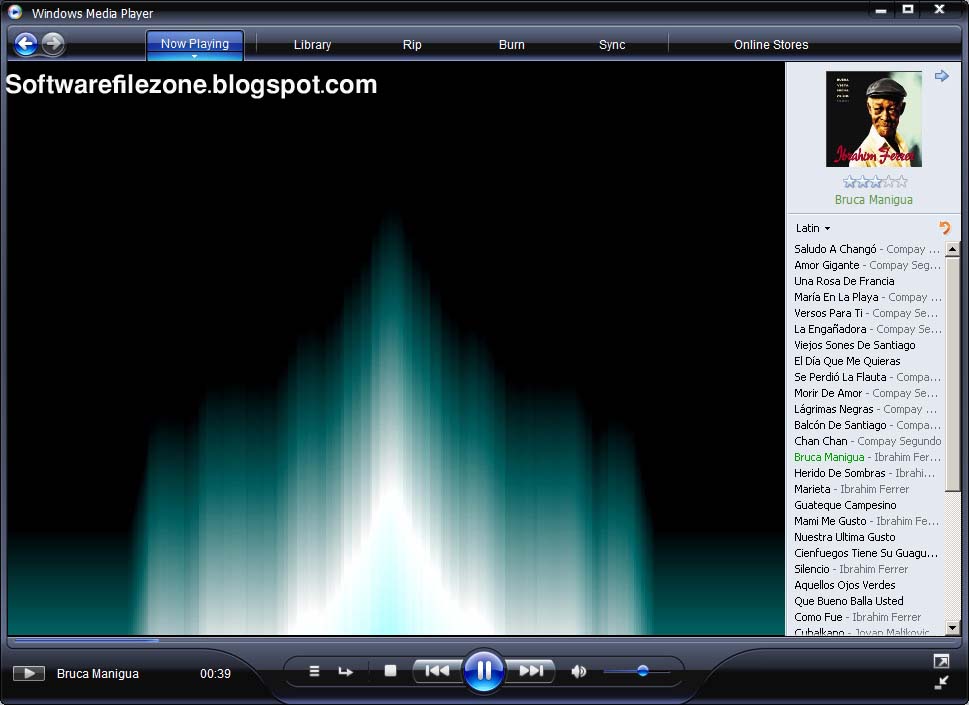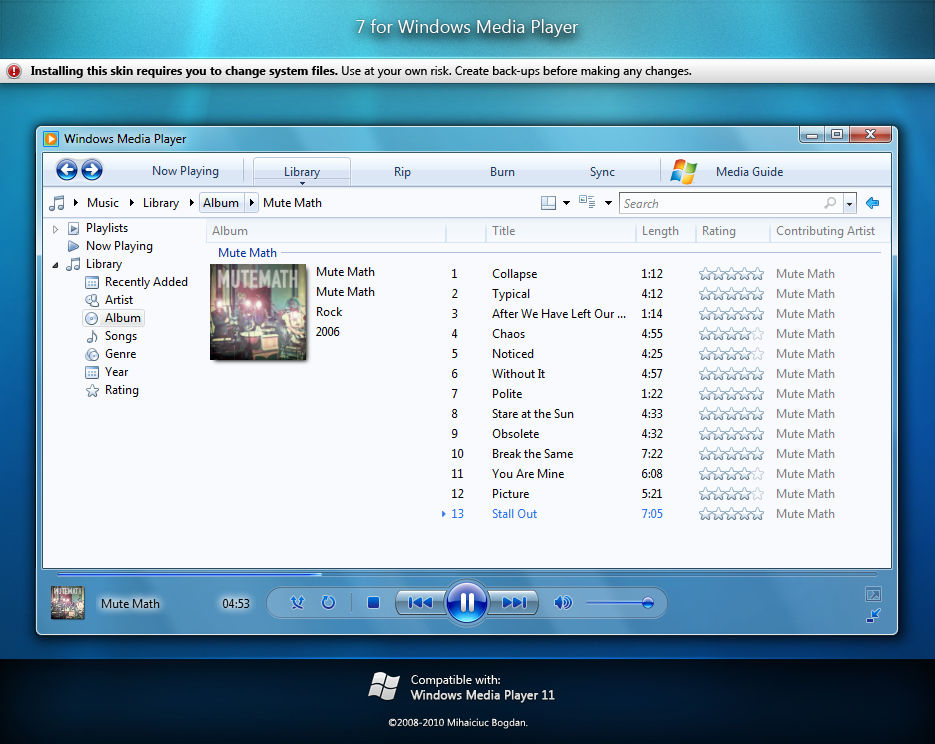If you're looking for a convenient app to let you play your audio and video files, you might want to give Windows Media Player 11 a try. In addition to allowing you to play your files, this app will also let you make a library of your media files. You can also create a playlist of music. These features allow you to access and organize your media files more easily.
BS.Player is a very popular media player which doesn't exactly look too modern, but popular none-the-less. It doesn't come with support for many different codecs or formats out-of-the-box, but it can automatically download free codecs for your from the web if a file isn't supported. Download Windows Media Player. A multimedia program for Windows that supports audio and video playback options. Windows Media Player is included with Windows 10 desktop. Note that the app no longer plays DVDs. Find Windows Media Player on your PC: Use the search box on the taskbar to search for 'Windows Media Player' Read more about DVD playback options for Windows.


Windows Media Player Download
- I know that many of you prefer other video players (I use KMPlayer) but Windows Media Player comes already installed with Windows and it is widely used. If you do use Windows Media Player in Windows 7, there is a large list of keyboard shortcuts at this Microsoft blog. Here is one useful shortcut that is not given there. Sometimes, you may want to advance or retrace a video one frame at a time.
- In the Open Media window, select Add, choose the file you rotated, then select Convert/Save. In the Convert window, go to the Destination section, select Browse, then choose an existing file to overwrite or enter a new file name. Select Start to begin the conversion process and save the video file.

This app is still being used, but it is from a few years back when Microsoft XP was commonly being used. That's why a lot of people like to use the Windows Media Player 11 when they're viewing file types from a few years ago. For example, this is a good app to use to view AVI files. A lot of users enjoy being able to make their library using the media player and change the names of the files within the library. It's easier than ever to copy a library in Windows Media Player 11. On the other hand, some users have complained that it's a little more complicated to install the software. This is due to the fact that the software has to be validated. However, there's a lot of information available in online forums to help users through this part of using the software.
Pros
- Keep files organized without any effort- If you like to stay organized and you have a lot of video and photo files, this is a good app for you. It's easy to organize libraries and playlists with Windows Media Player 11.
- Use the player itself to make edits to tags and file names- It's convenient that you don't have to go out of the program when you want to change the name of your files. You can make edits to things like tags and files right there in the app.
Cons
- New codecs are necessary when you want to include new file types- Because this app is a little dated, you have to add in codecs if you want to try to use it to run newer files.
- You can't use this on a 64bit Windows 10 machine- Another thing that indicates the age of this app is that it won't work with a 64bit windows machine.
Windows Media Player Download Fast Windows 8

More Information
With Windows Media Player 12 in Windows 7, you already have a very powerful tool for playing, managing, synchronizing and copying of video and audio files.
If you are using an earlier version of Windows such as Windows XP, we recommend that you install the current version of media player, to the benefit of all features and functionality.
Download - Windows Media Player for Windows XP
Play videos with Windows Media Player
Download Music Windows Media Player
It is very easy to play a video file by using Windows Media Player. If you save a video file on your hard disk, double-click the file to launch. You can watch videos on the Internet (such as the library of ARD or ZDF) by using Windows Media Player, you might need a small browser add-on program for it. To do this, follow these steps: more in the following parts of this series.
1. Click Start.
2. Type Media Player in the seach box.
3. Click Windows Media Player in the Programs list.
4. Windows Media Player is started. In the left navigation pane, you will find your Videos library. Click it to view all the video files associated with this library.
If the video you want to play is on your hard disk, but not in this library, you should add the video to the Videos library so taht you can access it at any time via the Windows Media Player. To do this, right-click Videos.
5. Click Manage Video library.
6. In the right pane, click Add, specify the location where you put your videos, and then click Include folder.
7. Click OK. All videos that you save in this folderare automatically added to the library.
8. Tip:To play a video file immediately in the media player and also automatically add it to the videos library, click the corresponding file entry in the Windows Explorer, right-click and then click Add to the Windows Media Player playlist.
Windows Media Player Download 64-bit
Windows Media Player 12: Video codecs
To properly play video (and even music files), Windows Media Player required an appropriate codec. Codecs are small programs that encode digital signals in a file or data and decode. Only in this way, the player can interpret the streams as a music or film and play correctly. If a codec is missing in the system, the corresponding video file cannot be played. You will receive an error message.
Because Windows Media Player is well equipped with and all major audio and video formats - including 3GP, AAC, AVCHD, MPEG-4, WMV and WMA and AVI, DivX, mov, and XviD files, this error message generally does not appear.
Codec control
You can easily control what codecs are already installed and ensure that the media player when loads automatically new codecs from the Internet.
1. Click Start.
2. Type Media Player in the search box
3. Click Windows Media Player.
4. The Windows Media Player is started. If the row that contains the menu commands is hidden, press [CTRL] and [M] at the same time. Then in the menu bar, click Help.
5. Click About Windows Media Player.
6. The following dialog box, click Technical Support Inoformation.
7. Windows Media Player opens then a technical details list view in your browser. Scroll to the Video Codecs section. You will see all codecs and file formats supported by the respective codec.
How To Download Windows Media Player
Codecs have automatically installed

You can configure the Windows Media Player so that it automatically downloads and installs updates and codec enhancements from the Internet when available. This makes more sense in most cases than manually in the Internet codec packs to search for. Some of the circulating on the Internet, free codec packs are not mature or with malicious software. In the worst cases, these programs break the functionality of Windows Media Player.
1. Start Windows Media Player as described above, and then click Tools on the menu bar.
2. Click Options.
3. On the Player tab, select either Once a day or Once a weekunder Automatic updates.
4. Click OK.
